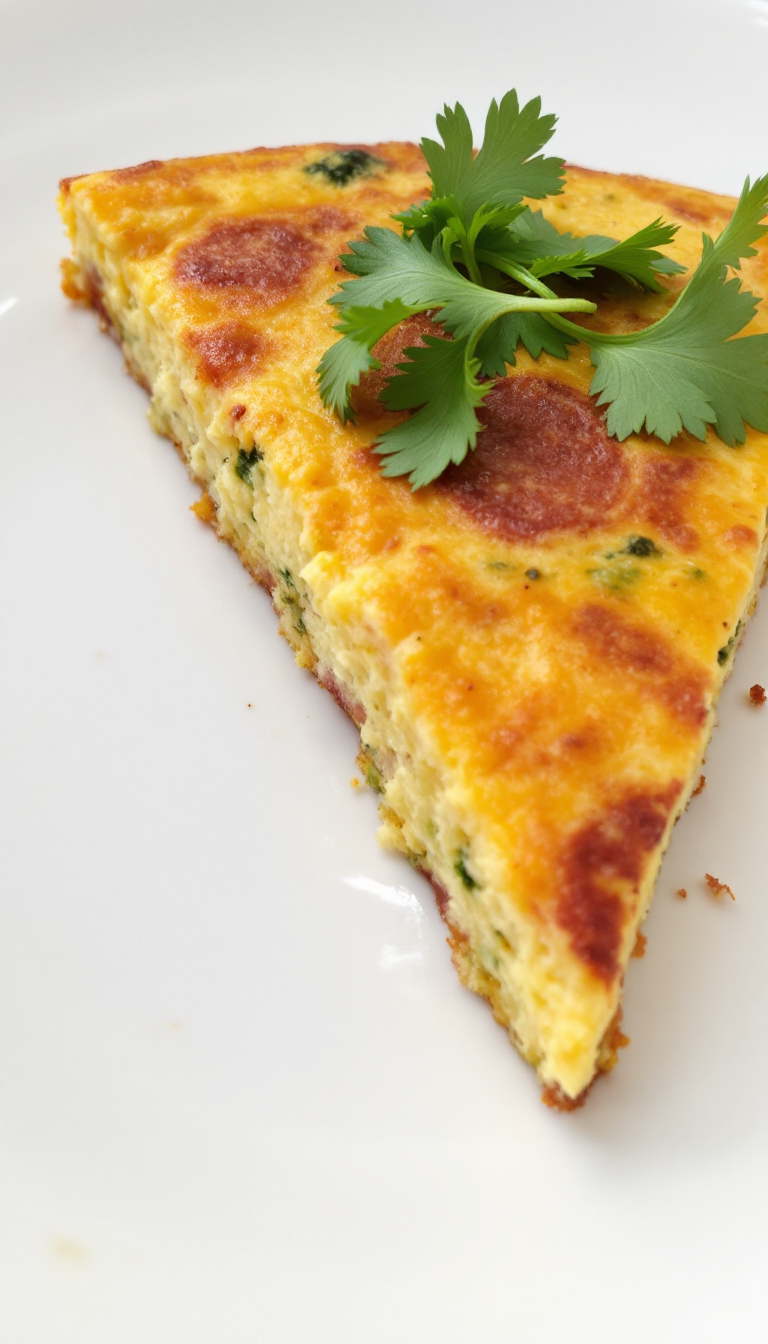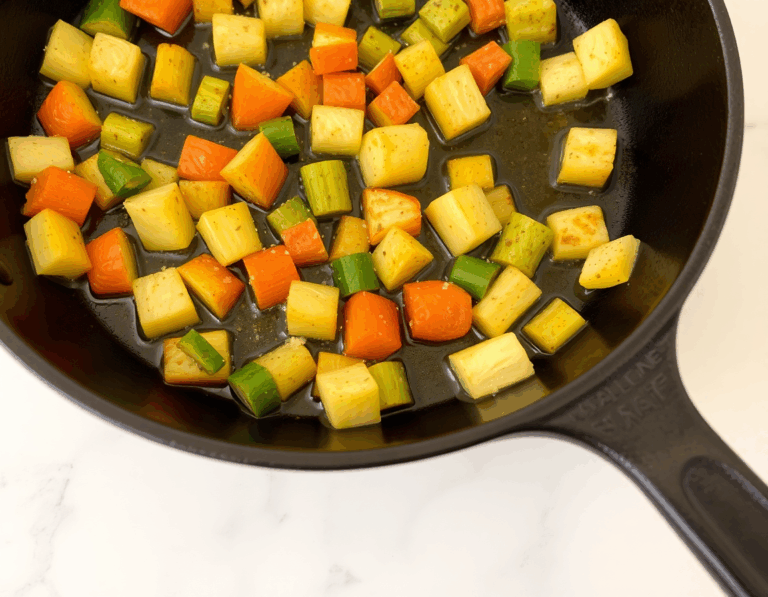Breakfast can be a whirlwind, right? But this frittata—oh, it’s like a calm, sunny morning in a pan.
Picture this: eggs mingling with fresh veggies and maybe a sprinkle of cheese; it’s as if the ingredients are having a little get-together, inviting you to join.
And, speaking of mornings, remember those days when you just want something easy yet delightful? This recipe’s your answer.
Steps
- Preheat your oven to 400°F. In a bowl, whisk together eggs, almond milk, garlic, and salt until the mixture is smooth. Set this egg mixture aside while you prepare the vegetables.
- Heat olive oil in a 10 or 12-inch cast iron skillet over medium heat. Add your chosen vegetables and a pinch of salt and pepper, cooking them until they are tender. Stir occasionally to ensure even cooking.
- Once the vegetables are ready, incorporate any spices or herbs you wish to add. Pour the prepared egg mixture over the vegetables, and gently shake the pan to evenly distribute the eggs.
- Sprinkle your desired cheese over the top of the frittata. Transfer the skillet to the preheated oven and bake for 15 to 20 minutes until the eggs are set and the edges are lightly golden.
- Remove the skillet from the oven and allow the frittata to cool slightly. Slice and serve as desired, adding extra herbs or toppings if you wish.
Ingredients
- Eggs
- Almond milk (or any milk)
- Garlic
- Salt
- Pepper
- 1 tablespoon olive oil
- Scallions
- Broccoli
- Smoked paprika
- Feta cheese
- ½ tablespoon olive oil
- 1 shallot, chopped
- 2 roasted red bell peppers, chopped
- 2 cups spinach
- ? cup crumbled feta cheese
- ½ tablespoon olive oil
- Scallions
- Asparagus
- Peas
- Mozzarella cheese
- Feta cheese
- 1 tablespoon olive oil
- 1 shallot, chopped
- 12 ounces mixed mushrooms, chopped
- ¼ cup chopped tarragon
- ? cup grated pecorino cheese
- ½ tablespoon olive oil
- 1 shallot, chopped
- Cherry tomatoes
- Basil
- Mozzarella cheese
FAQ
- What is a frittata, and how does it differ from a quiche?
- A frittata is an egg-based dish filled with vegetables, herbs, and cheese, often referred to as a crustless quiche. Unlike quiches, which have a pastry crust, frittatas are made without one, making them a simpler and quicker option.
- How do you make a basic frittata?
- To make a frittata, whisk together eggs, milk, garlic, salt, and pepper, then sauté your choice of vegetables in a cast iron skillet. Stir in spices or herbs, add the egg mixture, and top with cheese. Bake in a 400-degree oven for 15-20 minutes until set and lightly golden.
- What are some popular frittata variations?
- Some favorite frittata combinations include broccoli and feta, roasted red pepper and spinach, spring veggies like asparagus, mixed mushroom with tarragon, and a Caprese style with cherry tomatoes and basil.
- What is the best type of pan to use for making a frittata?
- A cast-iron skillet is ideal for making frittatas as it can seamlessly transition from stovetop to oven and distributes heat evenly. A well-seasoned skillet provides a non-stick surface, making it easier to slice and serve the frittata.
- How can frittatas be served for different meals?
- Frittatas are versatile and can be served as part of a brunch spread alongside dishes like mimosas, French toast, or fruit salad. For dinner, pair with a kale salad and good bread. To enhance individual slices, top with fresh herbs, avocado, or a side of yogurt, salsa, or pesto.
Tips
- Ensure your vegetables are evenly distributed in the pan before adding the egg mixture. This prevents the need to move them around later and ensures each bite has a good mix of ingredients.
- Experiment with different flavors by changing up herbs or vegetables. Aim for a ratio of about 1/4 cup of vegetables per egg, or 2 heaping cups of veggies for 6-8 eggs, to maintain a good balance.
- Use a cast-iron skillet for best results, as it can seamlessly transition from stovetop to oven and provides even heat distribution. A well-seasoned skillet also helps prevent sticking.
- Be cautious with the hot skillet handle once it comes out of the oven. Protect your hands by using a kitchen towel or a silicone handle cover to avoid burns.
Equipment
- Cast iron skillet (10 or 12-inch)
- Silicone handle cover for the skillet


